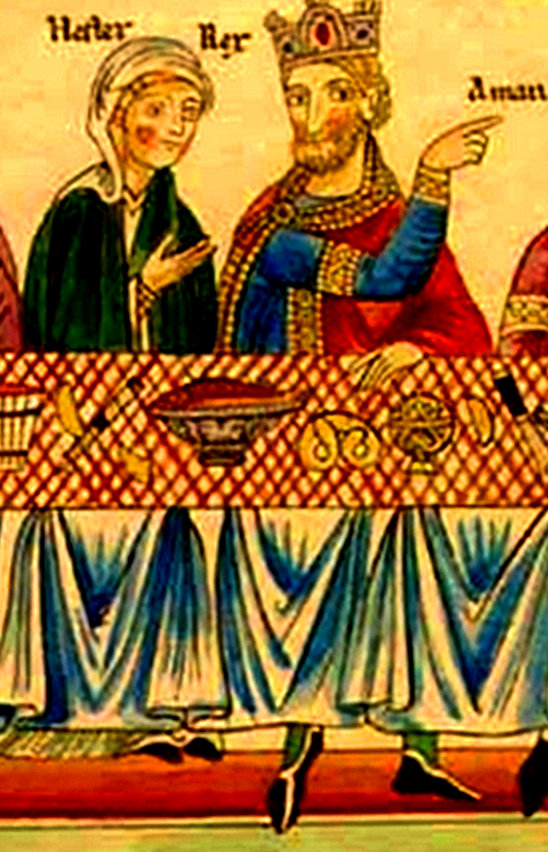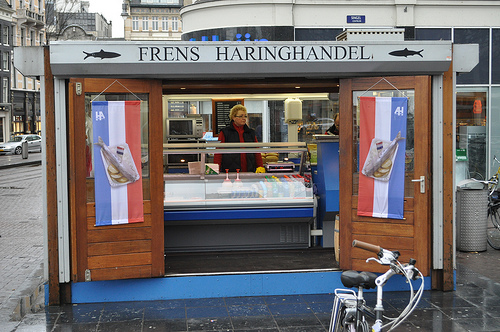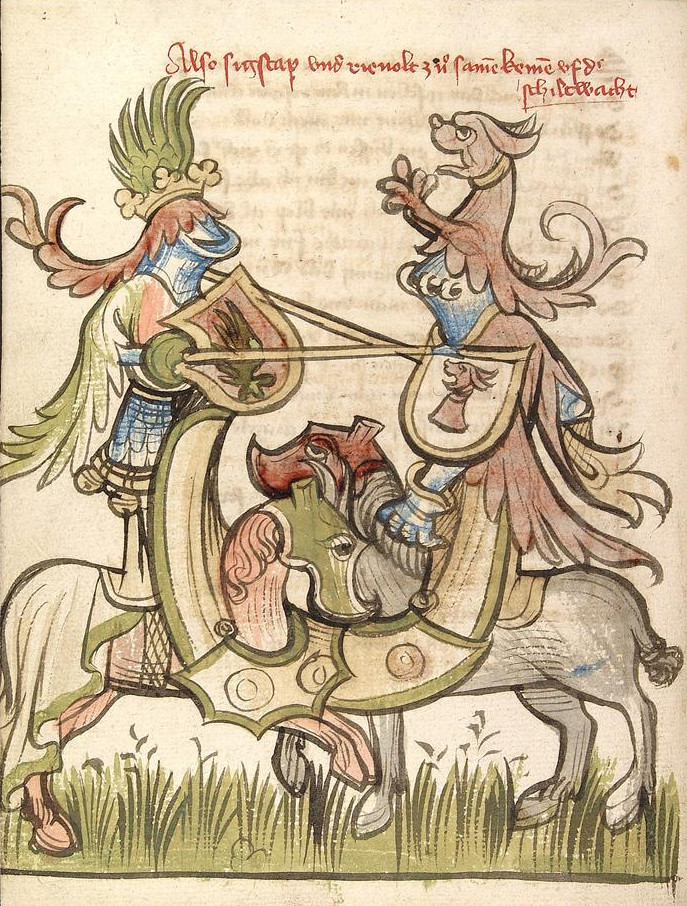|
The Fight Between Carnival And Lent
''The Fight Between Carnival and Lent'' was painted by Pieter Bruegel the Elder in 1559. It is a panorama of contemporary life in the Southern Netherlands. While the painting contains nearly 200 characters, it is unified under the theme of the transition from Shrove Tuesday to Lent, the period between Christmas and Easter. History The literary theme of the struggle between personifications of Lent and Shrove Tuesday dates as far back as the year 400 with the Psychomachia. The 13th Century French poem ''La Bataille de Caresme et de Charnage'' describes a symbolic battle between different foods, meat against fish. A likely graphic precursor of the painting is a 1558 Frans Hogenberg print in which the personifications of lean and fat are driven together on carts by their supporters. The supporters attack each other with fish, waffles, cookies and eggs. Also in 1559, Bruegel produced a series of prints of the Seven Virtues, which have formal similarities: an allegorical figure, ag ... [...More Info...] [...Related Items...] OR: [Wikipedia] [Google] [Baidu] |
Pieter Bruegel The Elder
Pieter Bruegel (also Brueghel or Breughel) the Elder (, ; ; – 9 September 1569) was the most significant artist of Dutch and Flemish Renaissance painting, a painter and printmaker, known for his landscapes and peasant scenes (so-called genre painting); he was a pioneer in making both types of subject the focus in large paintings. He was a formative influence on Dutch Golden Age painting and later painting in general in his innovative choices of subject matter, as one of the first generation of artists to grow up when religious subjects had ceased to be the natural subject matter of painting. He also painted no portraits, the other mainstay of Netherlandish art. After his training and travels to Italy, he returned in 1555 to settle in Antwerp, where he worked mainly as a prolific designer of prints for the leading publisher of the day. Only towards the end of the decade did he switch to make painting his main medium, and all his famous paintings come from the following perio ... [...More Info...] [...Related Items...] OR: [Wikipedia] [Google] [Baidu] |
The Netherlands
) , anthem = ( en, "William of Nassau") , image_map = , map_caption = , subdivision_type = Sovereign state , subdivision_name = Kingdom of the Netherlands , established_title = Before independence , established_date = Spanish Netherlands , established_title2 = Act of Abjuration , established_date2 = 26 July 1581 , established_title3 = Peace of Münster , established_date3 = 30 January 1648 , established_title4 = Kingdom established , established_date4 = 16 March 1815 , established_title5 = Liberation Day , established_date5 = 5 May 1945 , established_title6 = Kingdom Charter , established_date6 = 15 December 1954 , established_title7 = Caribbean reorganisation , established_date7 = 10 October 2010 , official_languages = Dutch , languages_type = Regional languages , languages_sub = yes , languages = , languages2_type = Recognised languages , languages2_sub = yes , languages2 = , demonym = Dutch , capital = Amsterdam , largest_city = capital , ... [...More Info...] [...Related Items...] OR: [Wikipedia] [Google] [Baidu] |
Ash Wednesday
Ash Wednesday is a holy day of prayer and fasting in many Western Christian denominations. It is preceded by Shrove Tuesday and falls on the first day of Lent (the six weeks of penitence before Easter). It is observed by Catholics in the Roman Rite, Lutherans, Moravians, Anglicans, Methodists, Nazarenes, as well as by some churches in the Reformed tradition (including certain Congregationalist, Continental Reformed, and Presbyterian churches). As it is the first day of Lent, many Christians begin Ash Wednesday by marking a Lenten calendar, praying a Lenten daily devotional, and making a Lenten sacrifice that they will not partake of until the arrival of Eastertide. Many Christians attend special church services, at which churchgoers receive ash on their foreheads. Ash Wednesday derives its name from this practice, which is accompanied by the words, "Repent, and believe in the Gospel" or the dictum "Remember that you are dust, and to dust you shall return." The ashes ar ... [...More Info...] [...Related Items...] OR: [Wikipedia] [Google] [Baidu] |
Monk
A monk (, from el, μοναχός, ''monachos'', "single, solitary" via Latin ) is a person who practices religious asceticism by monastic living, either alone or with any number of other monks. A monk may be a person who decides to dedicate their life to serving other people and serving God, or to be an ascetic who voluntarily chooses to leave mainstream society and live their life in prayer and contemplation. The concept is ancient and can be seen in many religions and in philosophy. In the Greek language, the term can apply to women, but in modern English it is mainly in use for men. The word ''nun'' is typically used for female monastics. Although the term ''monachos'' is of Christian origin, in the English language ''monk'' tends to be used loosely also for both male and female ascetics from other religious or philosophical backgrounds. However, being generic, it is not interchangeable with terms that denote particular kinds of monk, such as cenobite, hermit, anchor ... [...More Info...] [...Related Items...] OR: [Wikipedia] [Google] [Baidu] |
Mussel
Mussel () is the common name used for members of several families of bivalve molluscs, from saltwater and Freshwater bivalve, freshwater habitats. These groups have in common a shell whose outline is elongated and asymmetrical compared with other edible clams, which are often more or less rounded or oval. The word "mussel" is frequently used to mean the bivalves of the marine family Mytilidae, most of which live on exposed shores in the intertidal zone, attached by means of their strong Byssus, byssal threads ("beard") to a firm substrate. A few species (in the genus ''Bathymodiolus'') have colonised hydrothermal vents associated with deep ocean ridges. In most marine mussels the shell is longer than it is wide, being wedge-shaped or asymmetrical. The external colour of the shell is often dark blue, blackish, or brown, while the interior is silvery and somewhat nacreous. The common name "mussel" is also used for many freshwater bivalves, including the freshwater pearl mussels. F ... [...More Info...] [...Related Items...] OR: [Wikipedia] [Google] [Baidu] |
Pretzel
A pretzel (), from German pronunciation, standard german: Breze(l) ( and French / Alsatian: ''Bretzel'') is a type of baked bread made from dough that is commonly shaped into a knot. The traditional pretzel shape is a distinctive symmetrical form, with the ends of a long strip of dough intertwined and then twisted back onto itself in a particular way (a pretzel loop or pretzel bow). Today, pretzels come in a wide range of shapes. Salt is the most common seasoning, or topping, for pretzels, complementing the washing soda or lye treatment that gives pretzels their traditional skin and flavor acquired through the Maillard reaction. Other seasonings are mustard, cheeses, sugar, chocolate, cinnamon, sweet glazing, seeds, and nuts. Varieties of pretzels include soft pretzels, which should be eaten shortly after preparation, and hard-baked pretzels, which have a long shelf life. History There are numerous accounts regarding the origin of pretzels, as well as the origin of the ... [...More Info...] [...Related Items...] OR: [Wikipedia] [Google] [Baidu] |
Herring As Food
Herring are forage fish in the wild, mostly belonging to the family Clupeidae, but they are also an important food for humans. Herring often move in large schools around fishing banks and near the coast. The most abundant and commercially important species belong to the genus ''Clupea'', found particularly in shallow, temperate waters of the North Pacific and North Atlantic Oceans, including the Baltic Sea, as well as off the west coast of South America. Three species of ''Clupea'' are recognized; the main taxon, the Atlantic herring, accounts for over half the world's commercial capture of herrings. Herrings played a pivotal role in the history of marine fisheries in Europe, and early in the twentieth century, their study was fundamental to the evolution of fisheries science.Pauly, Daniel (2004''Darwin's Fishes: An Encyclopedia of Ichthyology, Ecology, and Evolution''Page 109, Cambridge University Press. . These oily fish also have a long history as an important food fish, and ... [...More Info...] [...Related Items...] OR: [Wikipedia] [Google] [Baidu] |
Peel (tool)
A peel is a shovel-like tool used by bakers to slide loaves of bread, pizzas, pastries, and other baked goods into and out of an oven. It is usually made of wood, with a flat carrying surface (like a shovel's blade) for holding the baked good and a handle extending from one side of that surface. Alternatively, the carrying surface may be made of sheet metal, which is attached to a wooden handle. Wood has the advantage that it does not become hot enough to burn the user's hands the way metal can, even if it is frequently in the oven. The word presumably derives from the French ''pelle'', which describes both a peel and a shovel. A peel's intended functions are to: * Transfer delicate breads, pastries, etc into an oven where transferring them directly by hand could deform their delicate structure. * Allow food to be placed further back in an oven than could normally be reached by the baker. * Keep the baker's hands out of the hottest part of an oven, or prevent the baker from burn ... [...More Info...] [...Related Items...] OR: [Wikipedia] [Google] [Baidu] |
Suckling Pig
A suckling pig is a piglet fed on its mother's milk (i.e., a piglet which is still a " suckling"). In culinary contexts, a suckling pig is slaughtered between the ages of two and six weeks. It is traditionally cooked whole, often roasted, in various cuisines. It is usually prepared for special occasions and gatherings. The most popular preparation can be found in Spain and Portugal under the name ''lechón'' (Spanish) or ''leitão'' (Portuguese). The meat from suckling pig is pale and tender and the cooked skin is crisp and can be used for pork rinds. The texture of the meat can be somewhat gelatinous due to the amount of collagen in a young pig. History There are many ancient recipes for suckling pig from Roman and Chinese cuisine. Since the pig is one of the first animals domesticated by human beings for slaughter, many references to pigs are found in human culture. The suckling pig, specifically, appears in early texts such as the sixth-century Salic law. As an example o ... [...More Info...] [...Related Items...] OR: [Wikipedia] [Google] [Baidu] |
Rotisserie
Rotisserie, also known as spit-roasting, is a style of roasting where meat is skewered on a spit – a long solid rod used to hold food while it is being cooked over a fire in a fireplace or over a campfire, or roasted in an oven. This method is generally used for cooking large joints of meat or entire animals, such as pigs or turkeys. The rotation cooks the meat evenly in its own juices and allows easy access for continuous basting. History In medieval cuisine and early modern kitchens, the spit was the preferred way of cooking meat in a large household. A servant, preferably a boy, sat near the spit turning the metal rod slowly and cooking the food; he was known as the "spit boy" or "spit jack". Mechanical turnspits ("roasting jacks") were later invented, first powered by dogs on treadmills, and then by steam power and mechanical clockwork mechanisms. The spit could also be powered by a turbine mounted in the chimney with a worm transmission for torque and speed convers ... [...More Info...] [...Related Items...] OR: [Wikipedia] [Google] [Baidu] |
Float (parade)
A float is a decorated platform, either built on a vehicle like a truck or towed behind one, which is a component of many festive parades, such as those of Carnival in Rio de Janeiro, the Carnival in São Paulo, the Carnival of Viareggio, the Maltese Carnival, the Macy's Thanksgiving Day Parade, the Key West Fantasy Fest parade, the Mardi Gras in New Orleans, the 500 Festival Parade in Indianapolis, the United States Presidential Inaugural Parade, and the Tournament of Roses Parade. For the latter event, floats are decorated entirely in flowers or other plant material. Float history Parade floats were first introduced in the Middle Ages. Churches used pageant wagons as movable scenery for passion plays, and craftsmen with artisan guilds built pageant wagons for their specified craft. The wagons were pulled throughout the town, most notably during Corpus Christi in which up to 48 wagons were used, one for each play in the Corpus Christi cycle. They are so named because the f ... [...More Info...] [...Related Items...] OR: [Wikipedia] [Google] [Baidu] |
Jousting
Jousting is a martial game or hastilude between two horse riders wielding lances with blunted tips, often as part of a tournament (medieval), tournament. The primary aim was to replicate a clash of heavy cavalry, with each participant trying to strike the opponent while riding towards him at high speed, breaking the lance on the opponent's shield or jousting armour if possible, or unhorsing him. The joust became an iconic characteristic of the knight (stock character), knight in Romantic medievalism. The participants experience close to three and a quarter times their body weight in G-forces when the lances collide with their armour. The term is derived from Old French , ultimately from Latin "to approach, to meet". The word was loaned into Middle English around 1300, when jousting was a very popular sport among the Anglo-Normans, Anglo-Norman knighthood. The synonym tilt (as in tilting at windmills) dates . Jousting is based on the military use of the lance by heavy cavalry. ... [...More Info...] [...Related Items...] OR: [Wikipedia] [Google] [Baidu] |

_-_James_Tissot_-_overall.jpg)





.jpg)
.jpg)
